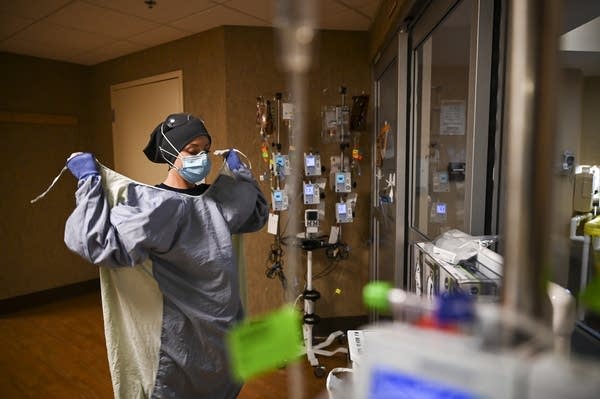Minnesota’s second year of COVID, by the numbers

North Memorial Health Hospital critical care nurse Kayla Lynch wears a protective gown before entering the room of a COVID-19 patient during her shift on Dec. 7, 2020 in Robbinsdale, Minn.
Aaron Lavinsky | Star Tribune via AP, file
Go Deeper.
Create an account or log in to save stories.
Like this?
Thanks for liking this story! We have added it to a list of your favorite stories.


